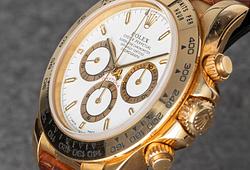A blue and white pear shaped Transitional vase, 17th Century.
Heavily potted, pear-shaped body with a tall waisted neck - painted with stylised tulips and Buddhist emblems. The decoration is in the “High Transitional” style with a scene of a military officer baring a halberd – a spear-shaped weapon with a crescent blade to one side. There is a fortress to the rear of the landscape and a horse being equipped for battle in the foreground. Height: 21 cm
Repair to rim.
Provenance
Purchased from Guest & Gray, London, May 2004.
The Avalon Collection.
This collection, which in the main focuses on the Interregnum and Kangxi periods has been both carefully and sensitively formed over the last twenty-five years. The collector, a member of the English Oriental Ceramic Society, has assembled the collection with an eye for provenance whilst purchasing from old European collections, well-established antique dealers and at auction.
Academically, the pieces have been well researched both in terms of their symbolism and narrative themes. In many instances the imagery on the pieces has been referenced to episodes in the romantic and historic novels of Chinese mythology, which were used extensively in the decoration of seventeenth century Chinese porcelain.
Literature
A similar example but displaying a different scene is included by S. Marchant & Sons in their exhibition of “ Ming Blue and White: Jiajing – Chongzhen: Including Dated Examples”, 2004, Page 108, No 77.
More information
It is thought that the scene may be taken from the historic novel “Romance of the Three Kingdoms” - showing Lu Bu with his horse “Red Hare”. Lu Bu was a warlord during the late Eastern Han dynasty – described as a mighty warrior but notorious for his temperamental behaviour for which he earned the nickname of “Flying General”. In chapter three of the novel Lu Bu is described as “…with a lofty and dignified look and a majestic and awe-inspiring bearing, wielding a halberd….” – which, later in the novel, is given the name “Sky Piercer”.
Unfortunately Lu Bu met his end in 199 AD – being hanged and then decapitated on the orders of Cao Cao. After his death, his horse “Red Hare” came into Cao Cao’s procession and later it was given to Lord Guan. However the animal sadly starved itself to death whilst in the later ownership of Ma Zhong.
The halberd is a pun for “rank” – representing a rapid promotion and success in politics. Sometimes the halberd is also shown with a stone chime –representing “auspicious happiness”.


















































